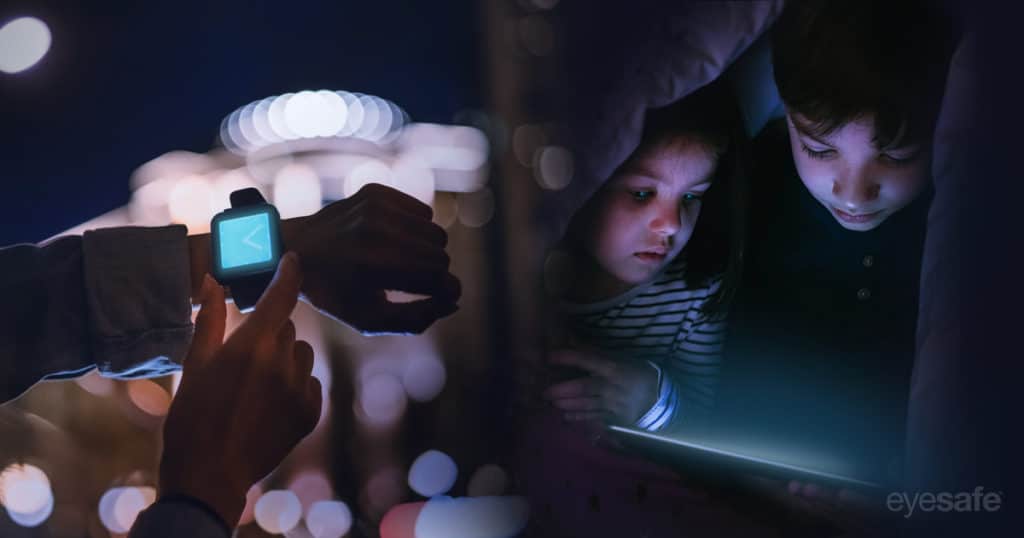During the much anticipated Apple event held this week, the company commented on a new feature for the Apple Watch Ultra: customers can now turn on night mode, which Apple says “removes retina-altering blue light to ease the strain on your eyes in the dark”. This new feature addresses increasing consumer concern about blue light emissions from digital devices. As a leader in blue light mitigation for consumer electronics, Eyesafe CEO, Justin Barrett, shares his thoughts on what this means for the industry.
Yesterday during Apple’s annual event, one statement out of the limelight caught our attention more than the iPhone, Watches, and AirPods.
Amidst their important product innovations, Apple called out that blue light is “retina-altering.” While not news to the display industry, this puts an exclamation point on the issue of digital light exposure and the growing concern for its impact on human health.
So why does this statement matter? We would surface three predictions about how this position will spur further change in consumer electronics and the display industry:
1. The effort toward creating “low blue light” solutions will increase.
The technology industry is turning away from displays that emit high amounts of blue light energy and is gravitating toward displays with more modest outputs of blue light. This turnover accelerated over the last two years amidst COVID-19. As with other technologies, Apple’s pressure will encourage change on a faster scale.
2. There will be a growing understanding that device makers are heroes, not villains.
There’s an agreement among electronics manufacturers: human health is a concern. Apple previously identified a goal to be known for its efforts in supporting healthy initiatives. We can agree that global brands like Apple can, in fact, be leaders for helping customers overcome the blue light issue.
3. There will be increasing research on the health impacts of cumulative blue light exposure.
While this statement is certainly bold, Eyesafe classifies health research around blue light in two camps: First, the recognized and vetted, and second, the to-be-determined. There is more work to be done in the second category and we expect University research on this topic will scale in proportion to Eyesafe adoption.
Eyesafe looks forward to navigating each of these three areas of coming change with major brands like Apple and our partners ZAGG, TUV Rheinland, LG Display, Dell, HP, Lenovo, Acer, BenQ, and the many others that are driving the adoption of low blue light displays.
Learn more about high-energy blue light from digital devices and see our summary of the current health research here. For further insight into how the growing body of research informs industry requirements for blue light, see Standards for Blue Light Management and Color Performance. For all products with Eyesafe blue light protection click here.
Justin Barrett, Eyesafe CEO
About Eyesafe
Eyesafe Inc. is a world leader in blue light management, including display technology, standards, certification, and accessory solutions. With an expansive portfolio of intellectual property, the company employs a world-class team of eye doctors, engineers, and scientists with decades of experience in electronics, display materials, light management, optometry, and ophthalmology. The Eyesafe brand is trusted by consumers and integrated in millions of digital devices from Dell, HP, Lenovo, LG, ZAGG and more. Eyesafe is recognized by Inc. 5000 as one of the fastest growing private companies in America for the second consecutive year. Learn more at eyesafe.com.
Media Contact:
Arick Wierson
+1 952-999-1741
[email protected]



